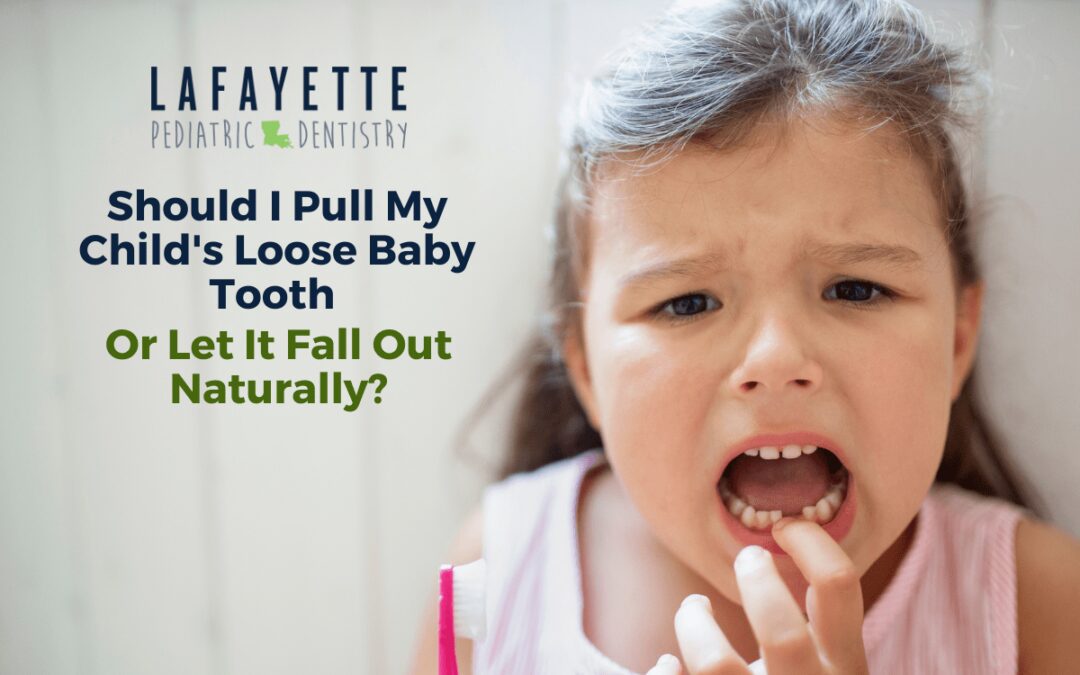Losing baby teeth is an exciting milestone for children, but it can also be unnerving for parents. When those little teeth start to wiggle, parents often wonder if they should step in and pull the tooth or let nature take its course.
In this article, we’ll walk through the ins and outs of dealing with loose baby teeth so you can decide what’s best for your child.
We’ll discuss the typical timeline for baby or primary teeth falling out naturally, the potential risks of pulling teeth too early, and tips on the best way to handle wiggly teeth. With the information here, you’ll be prepared when those little teeth start to loosen up!
When Do Baby Teeth Normally Fall Out?
The lower central incisors or lower front teeth are the first to fall out, typically at the age of 5.5 years. However, there is a +/- two-year range for this to happen. In other words, a child can lose these teeth as early as 4 years and as late as 7 years old.
The next teeth to fall out are the upper central incisors or upper front teeth. After a year and half break, around age 8-9, a child starts to lose their baby canines and then baby molars over a 3-4 year span. Overall, shedding of all primary teeth is often complete sometime between ages 10 and 13.
Read Also: A Complete Guide to Primary Teeth Eruption
Should I Help My Child Take Out Their Baby Tooth If It’s About to Fall?
When your child has a loose baby tooth, it is best to allow the tooth to fall out naturally rather than pulling it out prematurely.
Even if the tooth seems barely attached, there may be a sliver of the tooth’s root left, keeping the tooth attached to the gums. Extracting the tooth prematurely can cause this sliver to break, leaving it inside the gums, and potentially cause more pain and/or bleeding.
When the root has dissolved enough, the baby tooth will fall out on its own without significant pain or bleeding. Trust that those baby teeth know when they’re ready to let go, and avoid causing trauma by pulling them out too soon.
If there seems to be excessive bleeding when the tooth falls out naturally, have your child bite down on a moist tea bag or gauze to stop it. Advise your child to avoid irritating the empty socket so the gums can heal properly after the tooth falls out.
What to Do If Permanent Teeth are Coming in While the Baby Tooth is Still Present
It is common for a primary tooth to remain in place even as the permanent tooth starts to erupt behind it. Often, wiggling and playing with the loose primary tooth will eventually cause it to detach and fall out within a couple of months.
However, if, after this time, the primary tooth remains firmly in place despite the permanent tooth pushing down, it is best to schedule an appointment with a pediatric dentist.
A pediatric dentist can extract the stubborn primary tooth to allow the previously obstructed permanent tooth to shift into proper alignment in the gap left behind.
Read more: Understanding Your Child’s Irregular Tooth Growth: Advice from Our Dental Experts
Celebrating Tooth Loss with Thoughtful Rewards
Instead of just letting each tooth loss pass by unnoticed, why not make losing teeth something to get excited about?
When your child loses a tooth, make it into a celebration with a special treat or fun outing. Get some ice cream, go to their favorite park, or do something that makes the day joyful and memorable.
These little traditions, like leaving something under the pillow from the Tooth Fairy, add a layer of magic and joy to the whole tooth loss journey. It makes the experience more enchanting for kids instead of just something to get through.
Plus, celebrating each tooth makes your child feel supported. It transforms losing baby teeth into an important step to be excited about, not something to dread.
Losing baby teeth can be a confusing time for parents when it comes to knowing when to intervene. As we’ve discussed, patience is key when dealing with loose baby teeth.
It’s best to allow nature to take its course and trust that those little teeth know when they are ready to come out.
Our pediatric dentists at Lafayette Pediatric Dentistry understand this delicate process. As your trusted dental home, we explain each step of the dental process to help you understand when intervention may be needed. Our goal is to nurture a lifetime of healthy smiles.
From your child’s first checkup through adolescence, we are with you every step of the way. Contact our Lafayette pediatric dental office today to schedule an appointment.
